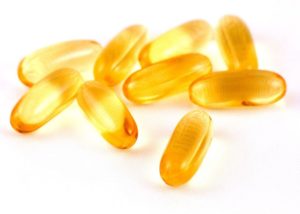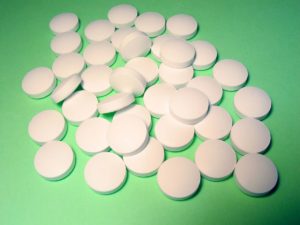 The controversy over whether people should be supplementing with vitamin D or not, and whether there are health benefits or harms from vitamin D supplementation is heating up. While observational studies have found health benefits with higher vitamin D blood levels, the beneficial results have generally not held up (or mixed findings) when people were randomly assigned to groups (randomized clinical trials). Most agree that blood levels of under 20 ng per mL is too low, but an issue is what is a desirable blood level? Should healthy people routinely supplement?
The controversy over whether people should be supplementing with vitamin D or not, and whether there are health benefits or harms from vitamin D supplementation is heating up. While observational studies have found health benefits with higher vitamin D blood levels, the beneficial results have generally not held up (or mixed findings) when people were randomly assigned to groups (randomized clinical trials). Most agree that blood levels of under 20 ng per mL is too low, but an issue is what is a desirable blood level? Should healthy people routinely supplement?
Having higher blood levels of vitamin D from sunshine appears to be good (it's the sunshine vitamin, after all). It's the taking of a vitamin D supplement that is now controversial and being debated. By the way, if one decides to take a vitamin D supplement, then the D3 form is desirable (rather than D2).
It was pointed out that a number of negative health effects can occur in those taking more than 4000 IU daily of vitamin D. For example, it may cause toxic effects such as renal impairment, hypercalcemia, or vascular calcification. In 2014, 3% of all U.S. adults and 6.6% of adults older than 60 years reported taking a vitamin D supplement of 4,000 or more IU per day. [See all vitamin D posts - most discuss observational studies finding benefits.]
The following are articles from Medscape (the medical site) and American Family Physician discussing recent research that is not finding health benefits with vitamin D supplementation, or mixed findings (e.g. one review found it may be protective in lowering death from any reason or from cancer; also reduce the number of upper respiratory infections). Therefore, some medical groups suggest that vitamin D screening is an unnecessary test, a waste of money, and shouldn't be routinely done in healthy individuals. Note that many, many trials are going on right now to try to settle the vitamin D supplement issue (whether there are health benefits or not). ...continue reading "Mixed Findings In Vitamin D Supplement Studies"

 Uh-oh, it looks like some (many?) new or fairly new kitchen cabinets are outgassing several types of PCBs from the wood sealants used on the cabinets. PCBs (polychlorinated biphenyls) were banned in the 1970s due to
Uh-oh, it looks like some (many?) new or fairly new kitchen cabinets are outgassing several types of PCBs from the wood sealants used on the cabinets. PCBs (polychlorinated biphenyls) were banned in the 1970s due to  Nice to hear that a
Nice to hear that a  Does the type of iron in supplements and additives matter for your health? OK, this was a preliminary
Does the type of iron in supplements and additives matter for your health? OK, this was a preliminary  Wondering which fruits and vegetables have the most pesticide residues? The annual Dirty Dozen List of produce with the most pesticide residues has once again been published by the
Wondering which fruits and vegetables have the most pesticide residues? The annual Dirty Dozen List of produce with the most pesticide residues has once again been published by the  New research published in
New research published in  A
A